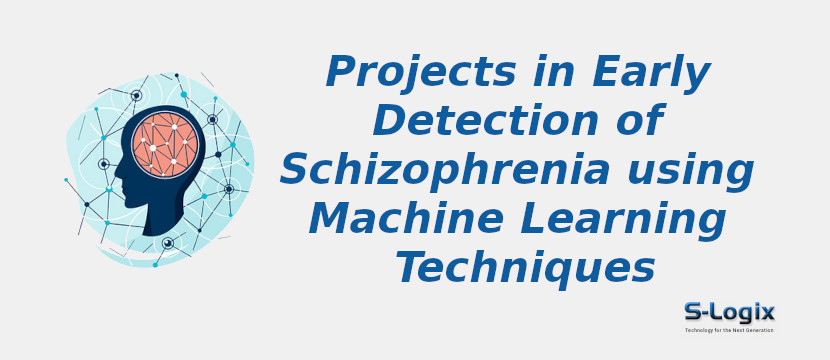Project Background:
The early detection of Schizophrenia using machine learning techniques stems from the critical need to identify and intervene in psychiatric disorders at their earliest stages to improve patient outcomes. Schizophrenia, a complex and debilitating mental illness, often manifests with subtle symptoms that can be challenging to detect in the early stages. Traditional diagnostic methods rely heavily on subjective assessments by healthcare professionals leading to delays in diagnosis and treatment initiation. This project uses machine learning algorithms to analyze diverse datasets, including neuroimaging scans, genetic markers, and behavioral data, to identify patterns and biomarkers of schizophrenia risk. By training predictive models on large datasets containing clinical and biological information, it seeks to develop accurate and reliable tools for early detection of Schizophrenia. These machine learning techniques hold promise for enhancing diagnostic accuracy, enabling proactive interventions, and ultimately improving long-term outcomes for individuals at risk of developing Schizophrenia.
Problem Statement
- Schizophrenia often presents with subtle symptoms in its early stages, making it challenging to diagnose accurately using traditional clinical assessments alone.
- Current diagnostic methods rely heavily on subjective assessments by healthcare professionals, leading to inconsistencies and potential delays in diagnosis.
- Biomarkers for Schizophrenia are not well-established, making it difficult to identify objective indicators of the disorders onset or progression.
- Datasets used for schizophrenia research encompass diverse sources, including neuroimaging scans, genetic data, and behavioral assessments, which present challenges in integration and analysis.
- Data from neuroimaging and genetic studies often have high dimensionality, requiring sophisticated feature selection and dimensionality reduction techniques to extract relevant information for predictive modeling.
Aim and Objectives
- Utilize machine learning techniques for early detection and prediction of Schizophrenia.
- Develop machine learning models trained on diverse datasets to identify early biomarkers and patterns indicative of schizophrenia risk.
-
Enhance diagnostic accuracy by integrating neuroimaging, genetic, and behavioral data for comprehensive analysis.
-
Explore feature selection and dimensionality reduction techniques to handle high-dimensional and heterogeneous data.
-
Validate and refine predictive models using large-scale, representative datasets to ensure generalizability and robustness.
- Ensure model interpretability to provide insights into the biological and clinical factors underlying schizophrenia onset and progression.
Contributions to Schizophrenia using Machine Learning Techniques
- Development of accurate and reliable machine learning models for early detection of Schizophrenia, enabling proactive interventions and improved patient outcomes.
- Identification of novel biomarkers and patterns indicative of Schizophrenia risk through analysis of diverse datasets, facilitating a deeper understanding of the disorders underlying mechanisms.
- Improve diagnostic accuracy by integrating neuroimaging, genetic, and behavioral data, leading to more precise and timely diagnoses.
- Facilitation of personalized treatment approaches by leveraging machine learning models to predict individualized disease trajectories and treatment responses.
- Provision of insights into the pathophysiology of Schizophrenia through interpretable machine learning models, contributing to advancements in our understanding of the disorder.
Deep Learning Algorithms for Schizophrenia Using Machine Learning Techniques
- Convolutional Neural Networks (CNNs)
-
Recurrent Neural Networks (RNNs)
-
Long Short-Term Memory (LSTM) networks
-
Graph Convolutional Networks (GCNs)
-
Autoencoders
-
Variational Autoencoders (VAEs)
-
Generative Adversarial Networks (GANs)
-
Siamese Networks
-
Transformer-based models
-
Deep Reinforcement Learning (DRL) algorithms
Datasets for Schizophrenia using Machine Learning Techniques
- ABIDE (Autism Brain Imaging Data Exchange)
-
ADNI (Alzheimers Disease Neuroimaging Initiative)
-
COBRE (Center for Biomedical Research Excellence)
-
MCIC (Multisite Clinical Imaging Consortium)
-
PRS (Psychiatric Genomics Consortium Schizophrenia)
-
OASIS (Open Access Series of Imaging Studies)
-
HCP (Human Connectome Project)
-
GSP (Genetics of Schizophrenia and Psychotic Disorders)
-
CORR (Center for Open Neuroscience Schizophrenia and Bipolar Disorder Dataset)
-
CANDI (CANDI Neuroimaging Dataset)
Software Tools and Technologies
Operating System: Ubuntu 18.04 LTS 64bit / Windows 10
Development Tools: Anaconda3, Spyder 5.0, Jupyter Notebook
Language Version: Python 3.9
Python Libraries:
1.Python ML Libraries:
- Scikit-Learn
- Numpy
- Pandas
- Matplotlib
- Seaborn
- Docker
- MLflow
2.Deep Learning Frameworks:
- Keras
- TensorFlow
- PyTorch
